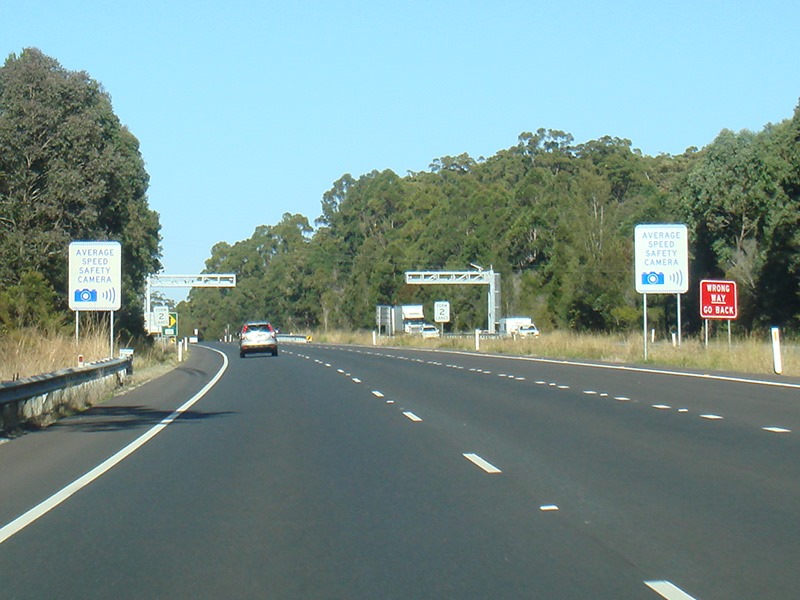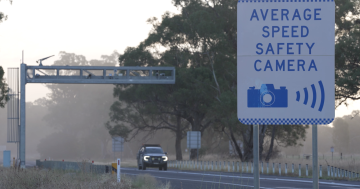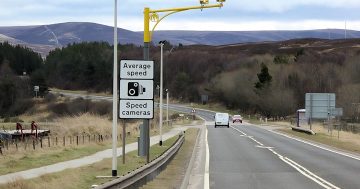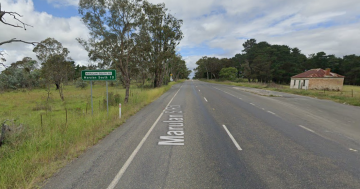
The 16 kilometres between Coolac and Gundagai will be one of two limited stretches of highway in regional NSW to see the introduction of average speed cameras for light vehicles. Photo: NSW Speed Camera Locations/Facebook.
A notorious high accident zone on the Hume Highway will now come into sharp focus following the introduction of a six-month point-to-point speed camera trial by the NSW Government.
The 16 kilometres between Coolac and Gundagai will be one of two limited stretches of highway in regional NSW to see the introduction of average speed cameras for light vehicles, the other being the 15 kilometres of Pacific Highway between Kew and Lake Innes near Port Macquarie.
These cameras, which calculate a driver’s average speed between two points, are already in use in NSW for heavy vehicles but will now be switched on for all vehicles.
Both locations were chosen based on a number of factors, existing infrastructure, and known crash history, having chalked up a combined total of six fatalities and 33 serious injuries between 2018 and 2022.
The Transport for NSW trial will assess if expanding the use of the speed camera technology from heavy vehicles to all vehicles reduces speeding, improves safety and prevents injuries and fatalities as part of a bid to tackle the rising road toll, which today stands at 227 – two more than at the same date in 2023.
All other mainland Australian states and the ACT already use average speed cameras for light vehicles as part of their speed enforcement programs and road safety experts called for their use across NSW at the NSW Road Safety Forum held earlier this year.
The trials, preempted by an advance communications campaign, are proposed to begin with a 60-day period in which speeding drivers will receive a warning letter rather than a fine before normal enforcement, including fines and demerit points, begins.
Road signs will alert all drivers that their speed is being monitored by average speed cameras on the trial stretches, giving them the opportunity to adjust their speed as needed.
The NRMA will form part of the assessment process to ensure drivers have a voice in the review of the trial led by Transport for NSW and other road safety experts.
NSW Roads minister John Graham said speeding is the biggest killer on NSW roads, contributing to 41 per cent of all fatalities over the past decade.
“That is 136 families and friend networks every year whose lives are never the same again after losing someone in a road crash where speeding was a contributing factor,” he said.
He said regional NSW was home to a third of the state’s population but was where two-thirds of all road deaths happen.
“NSW is the only jurisdiction in the world to use average speed cameras but restrict their use to heavy vehicles only,” Mr Graham said.
“In the context of a rising road toll, now is the time to trial these cameras for light vehicles and understand if we can keep more people safe on the road more of the time.
“All other mainland Australian states and countries like the UK, Norway, Italy and the Netherlands have them to be effective, and we aim to be as rigorous as possible to be sure they will also reduce road trauma in NSW,” he said.
Safer Roads and Highways (SARAH) president, Peter Frazer said they had been lobbying for the introduction of average speed camera systems to apply to all vehicles in NSW for over a decade.
“They promote safer driving habits by encouraging drivers and riders to stick to the speed limit,” he said.
“This not only lowers their risk of being involved in a serious crash, but also protects the lives and wellbeing of everyone on the road,” he said.















